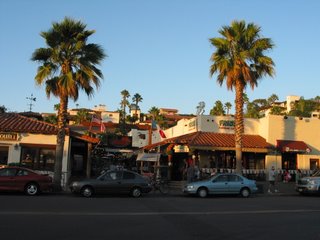Here is a question: If you know that the road you are on is going to turn from a 2 lane road to a 1 lane road (with merge signs), when would you start merging into the remaining lane?
OK, a few constraints:
- This is not a freeway
- There is no construction in progress
- The speed limit is under 40mph
- There is a traffic signal 20 car lengths before the merge
There are two possible answers here:
1. Merge as soon as possible (and ensure a spot for yourself, sorta)
2. Utilize all lanes until a merge becomes necessary
Depending on where you are, people pick one of the above. In LA, people choose #2. In Seattle, people choose #1. I choose #2 whenever possible, which pisses people off. That got me thinking as to why people go one way or the other. Is this just a group mentality? Is there some rocket science behind merging which I was not taught as a child (understandable since Mysore had very few roads with multiple lanes)?
Let's analyze both the scenarios and try to make sense out of it.
#1.
Good: The good thing about this is that people act as if there is only one lane and just fall behind one another. This reduces lane merging.
Bad: The bad thing about this is that I don't like leaving lanes empty. In this specific case (see constraints above), since speeds are low, merging is relatively easy and painless. So, why not use both lanes? The other problem is that people get stuck behind the traffic signal when it turns red. In this case, only 20 odd cars will be able to get ahead of the signal before it rotates (2+ min). If both lanes were used, there would have been 40 odd cars ahead of the signal. Hmm.. Also induces slinky (compression/expansion) effect due to merging at various points.
#2.
Good: Usage of both the lanes. 40 odd cars ahead of the traffic signal. No slinky effect due to one merge point. Everybody takes turns at the squeeze point, and traffic merges automatically.
Bad: Lot more merging at the squeeze point. But, since speeds are low, and motorists know that they need to merge, it can be relatively easy to merge.
I think that merging at the squeeze point is more efficient in this particular case resulting in more throughput. There will be a lot of disgruntled motorists on Issaquah-Pinelake road.
Tuesday, April 25, 2006
Wednesday, April 19, 2006
Downtown

What makes a downtown great, lively and attractive to locals as well as visitors? There are few cities in the US which can boast a lively and active downtown. While others are trying to revitalize their downtowns in vain. Cincinnati downtown is one such example. I used to wonder what was wrong with that downtown. They offered free parking, but still no one wanted to go there!
I am not talking about living in downtown here. Living in downtown is efficient, practical and desirable since most people work in downtowns. I am talking about the after-work hours. I am talking about weekends. How are some downtowns successful at attracting people while others are not?
We visited several cities in Southern California recently, and happened to experience several great downtowns. The 3rd Street Promenade in Santa Monica, Gaslamp district in San Diego, Old Town in San Diego (pictured above) to name a few. They are bustling with activity on weeknights as well as weekends. BTW, don't miss the Angelaterie (sp?) when you visit 3rd Street Promenade. They offer over 100 varieties of gelati.
Here are some of my observations on what makes a great downtown:
- Plenty of affordable parking
- Sidewalks, streetlights and landscaping - Well lit and beautiful
- Open spaces for kids to play - Small parks, fountains, lawns, etc.
- Accessibility - Close by freeways
- Safety
- World class shopping
- World class restaurants
- Movie multiplexes
- Family friendly events
- Promotions - Promote a positive image, and market the downtown
Most of the above mentioned points can be clubbed under the wide umbrella of Design. A good design is functional, easy to use and pleasing to the eye, and hence attractive.
Subscribe to:
Comments (Atom)